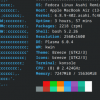Time for Linux Consolidation?
Despite the unlimited potential of Linux its growth is not all that staggering. As an operating system Linux has a number of positive attributes but its spread over the past few years, especially on the desktop platform, has not been as uninhibited as many would have otherwise forecasted. The reasons for this are multitudinous, to say the least, but pinning them done is easier said than done.
There are a number of obvious reasons why Linux is not the dominate operating system in today's computing environment. Some of which that come to mind are the prevalance of Windows use amongst beginners and the use of Windows and Apple's OS X in school systems. Having a Windows-mindset engrained in people resulting from use both at home and in the workplace is a major impediment to the spread of Linux, as this environment is seen as being inherently foreign and, even worse, incompatible. As the Linux cause grows many distributions are becoming better marketed and more user friendly, but each has a long way to go before that can match the marketing power of Microsoft or the appeal of OS X (which happens to be UNIX based).
One of the less widely recognized reasons why Linux has not yet toppled Windows, despite it many advantages, is how divided the resources available to Linux are. With dozen of different distributions the Linux community is so diffuse that the power or significance of any specific entity is severally limited. This, of course, holds more or less true depending on which companies you take into account. Even so, with developers and funds being divided proportionally amongst so many different areas it is difficult for Linux to provide a unified front.









































































